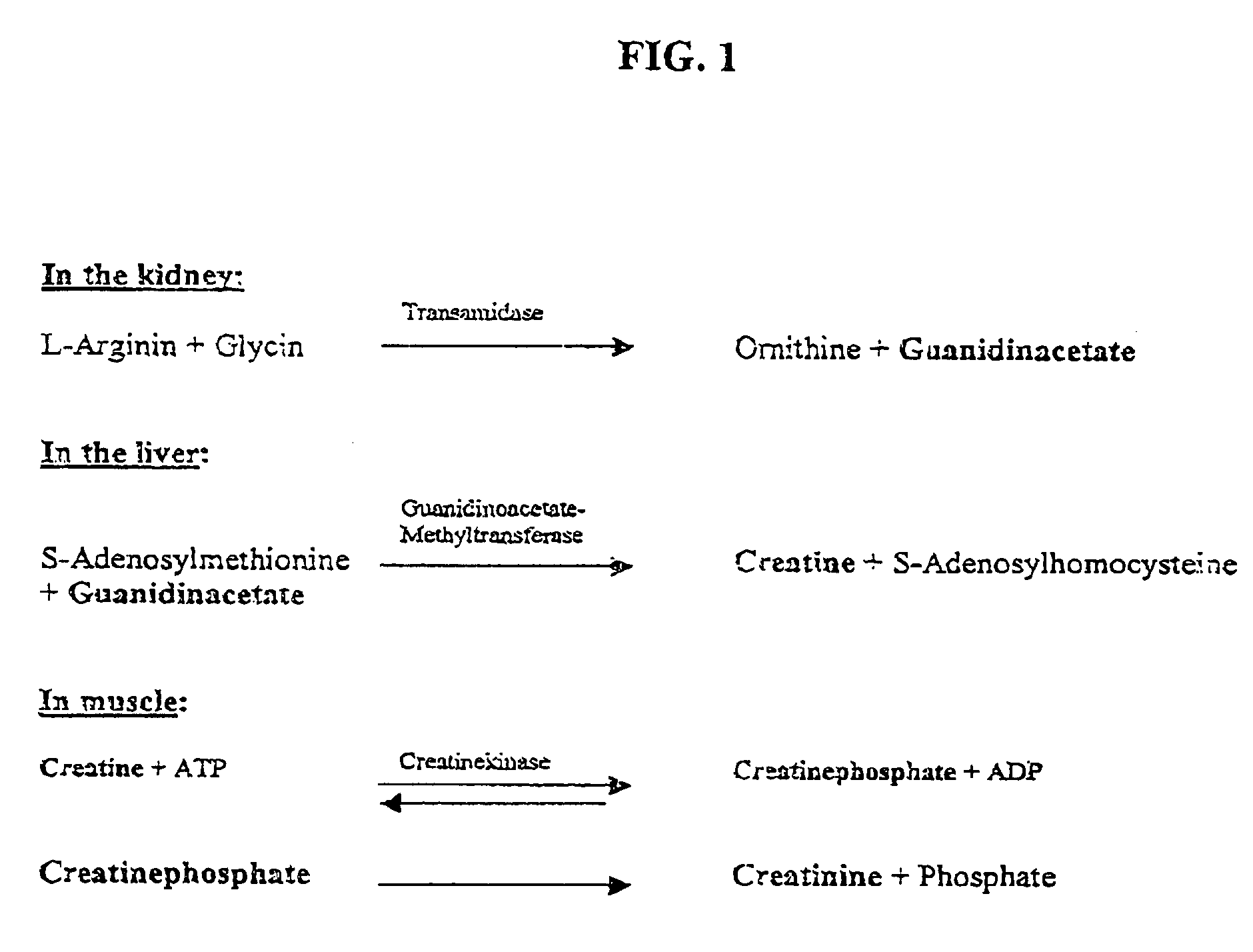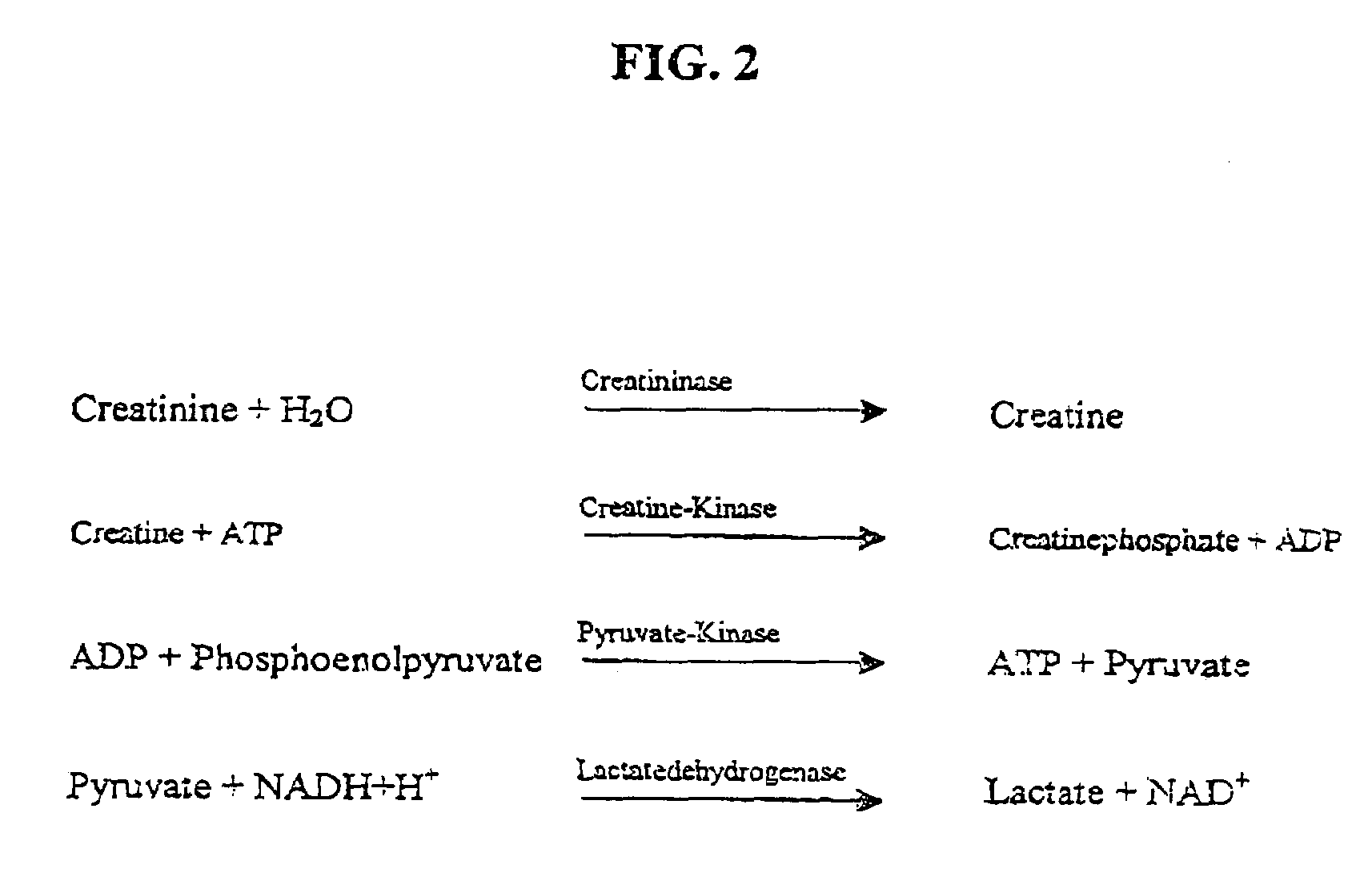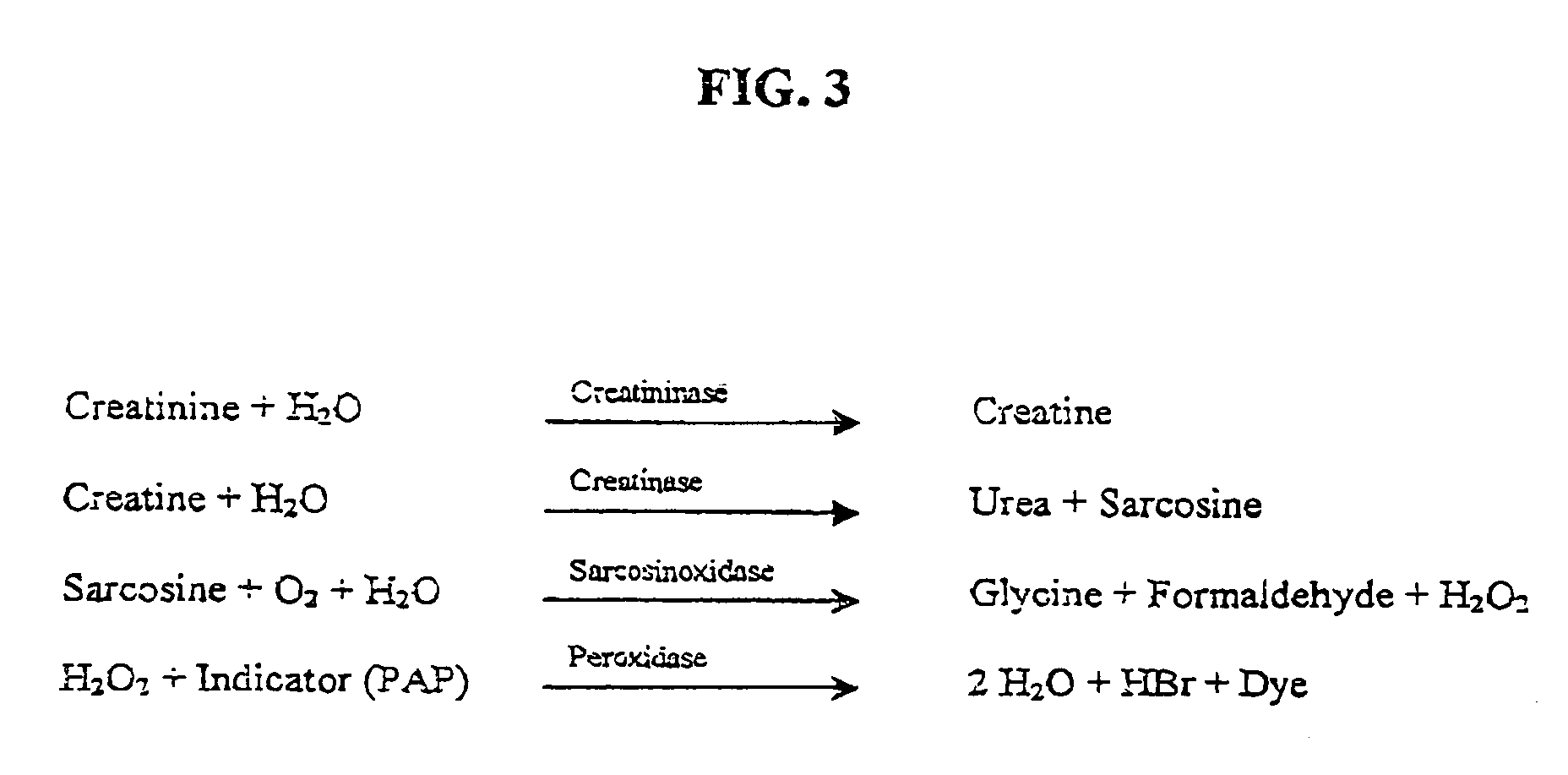Nucleotide sequence for creatinine deiminase and method of use
a creatinine deiminase and nucleotide sequence technology, applied in the field of nucleotide sequence for creatinine deiminase and method of use, can solve the problems of increased creatinine concentration, insufficient measurement of kidney function, possible disruption of muscle and/or kidney function, etc., to achieve rapid and specific determination of creatinine concentration
- Summary
- Abstract
- Description
- Claims
- Application Information
AI Technical Summary
Benefits of technology
Problems solved by technology
Method used
Image
Examples
example 1
Cloning of the Creatinine Deiminase Gene (“cdi Gene”) from T. creatinini
Purification of the Creatinine Deiminase from Tissierella creatinini
[0080]The culturing of Tissierella creatinini was carried out in Hungate tubes (Bellco Glass Inc., Vineland, USA) and incubated at 37° C. in an anaerobic medium, according to Bryant (Bryant, M. P. (1972), Am. J. Clin. Nutr. 25:1324–1328) and further according to a modified Hungate technique (Hungate, R. E. (1969). In: Norris, J. R. Ribbons, D. W. (Hrsg.) Methods in Microbiology 3B: 117–132. Academic Press, London). After adjusting the pH value of the medium using N2 / CO2 (80 / 20% (v / v)), the tubes were then autoclaved at 121° C. for 20–30 min. Before inoculation, a separately autoclaved reducing agent (L-cysteine, 5% (w / v)) was added to the cell mixture.
[0081]The disruption of the cellular integrity was performed using a French press (SLM Instrument Company, Urbana, USA) having a pressure in a range from 62 to 103 Mpa. Cellular debris and undisr...
example 2
Sequencing and Analysis of the cdi Gene from T. creatinini
[0087]The sequence of the cdi gene from the 4.5 kbp insert from the pKT1 plasmid was determined on both strands using the known “primers walking” method (Strauss, E. C., Kobori, J. A., Siu, G., Hood, L. E. (1986). Anal. Biochem. 154: 353–360). The DNA sequencing was performed using an Automated Laser Fluorescent Sequencer (ALF) and a PC installed with the software “ALF Manager v. 2.6” (Pharmacia LKB, Freiburg). For the sequencing reactions, the “Auto-READ Sequencing Kit” (Pharmacia LKB, Freiburg) was used. Sequencing was performed using the fluorescence tagged universal primers provided by the sequencing kit and / or using the sequence-derived fluorescence tagged primers (MWG Biotech GmbH (Ebersberg)).
[0088]Analysis of the sequence data was performed using the program DNA STRIDER, v. 1.2 (Marck, C. (1988). Nucl. Acids Res. 16: 1829–1836) on a Macintosh computer (Apple Computer, Cupertino, USA). Sizeable sequence analyses were ...
example 3
Heterologous Expression and Purification of an Active Creatinine Deiminase from T. creatinini in E. coli
[0091]The heterologous expression of an active creatinine deiminase derived from T. creatinini in E. coli (from the recombinant cell extract) was analyzed using gel electrophoresis (FIG. 8) and by determining the enzymatic activity in the cell-free raw extracts. Gel electrophoresis showed that in the case of E. coli DH5α / pKT1 (contrary to that seen for E. coli DH5α / pKS+) an additional and clearly viewable band of approximately 300 kDa (see FIG. 8, lane 4 and lane 6). Additionally, a band for the purified creatinine deiminase appeared at this same distance of 300 kDa (see FIG. 8, lanes 3 and 5), and likewise a similar band appeared in the raw extract of T. creatinini (FIG. 8, lane 2). The predicted size for creatinine deiminase (300 kDa) is well within range of the known value (288 kDa) as determined by Gottschalk et al. 1991 (supra). The specific activity of the recombinant creat...
PUM
| Property | Measurement | Unit |
|---|---|---|
| wavelength | aaaaa | aaaaa |
| concentration | aaaaa | aaaaa |
| mass | aaaaa | aaaaa |
Abstract
Description
Claims
Application Information
 Login to View More
Login to View More - R&D
- Intellectual Property
- Life Sciences
- Materials
- Tech Scout
- Unparalleled Data Quality
- Higher Quality Content
- 60% Fewer Hallucinations
Browse by: Latest US Patents, China's latest patents, Technical Efficacy Thesaurus, Application Domain, Technology Topic, Popular Technical Reports.
© 2025 PatSnap. All rights reserved.Legal|Privacy policy|Modern Slavery Act Transparency Statement|Sitemap|About US| Contact US: help@patsnap.com



